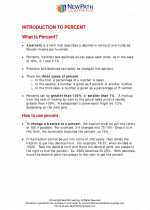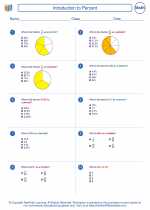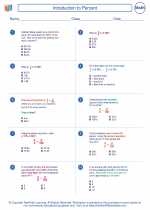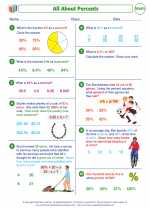Introduction to Percent
Percent is a way of expressing a number as a fraction of 100. It is denoted by the symbol "%". Understanding percentages is important for a variety of real-life applications, such as calculating sales tax, finding discounts, and understanding statistics.
Converting Between Percentages and Decimals
To convert a percentage to a decimal, divide the percentage by 100. For example, to convert 25% to a decimal, divide 25 by 100 to get 0.25.
To convert a decimal to a percentage, multiply the decimal by 100. For example, to convert 0.75 to a percentage, multiply 0.75 by 100 to get 75%.
Converting Between Percentages and Fractions
To convert a percentage to a fraction, write the percentage as a fraction with a denominator of 100, and then simplify if possible. For example, 60% can be written as 60/100, which simplifies to 3/5.
To convert a fraction to a percentage, divide the numerator by the denominator and then multiply by 100. For example, to convert 3/4 to a percentage, divide 3 by 4 to get 0.75, then multiply by 100 to get 75%.
Calculating Percentages
To calculate a percentage of a number, multiply the number by the percentage as a decimal. For example, to find 20% of 80, multiply 80 by 0.20 to get 16.
To find the original amount when given the percentage increase or decrease, divide the new amount by 1 plus (for increase) or minus (for decrease) the percentage as a decimal. For example, if an item increased by 25% to $125, divide 125 by 1.25 to find the original amount of $100.
Study Guide
Here are some key concepts to focus on when studying percent:
- Converting between percentages and decimals
- Converting between percentages and fractions
- Calculating percentages of numbers
- Finding the original amount when given a percentage increase or decrease
Practice converting between percentages, decimals, and fractions, and work on solving word problems involving percentages. Understanding percentages will help in various real-world situations, such as shopping, budgeting, and understanding data.
.◂Math Worksheets and Study Guides Seventh Grade. Introduction to Percent

 Worksheet/Answer key
Worksheet/Answer key
 Worksheet/Answer key
Worksheet/Answer key
 Worksheet/Answer key
Worksheet/Answer key
 Worksheet/Answer key
Worksheet/Answer key
